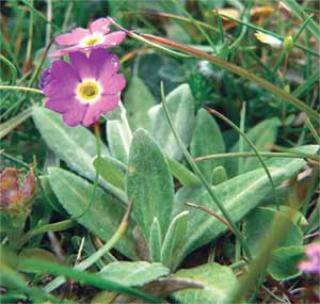Understanding The Causes And Consequences Of Rarity In Scottish Plants
Published on 11 June 2010 in Ecosystems and biodiversity

Introduction
Conservation effort has commonly focussed on rare species. Although numerous factors such as land use or climate change may lead to rarity, becoming rare may itself reduce the chances of long-term species survival. For example, rare species may have highly fragmented populations. This can limit the potential for reproductive exchange of genes between individuals and increase the possibility of problems resulting from inbreeding. Small, isolated populations may also be more susceptible to freak one-off events, for example extreme weather. The loss of even a few individuals can represent a substantial decrease in the total numbers of a rare species.
Because of the potential impacts of rarity on long-term species survival, rarity is often used as the basis for developing lists of species for conservation action. The Scottish Biodiversity List is “a list of flora, fauna and habitats considered by the Scottish Ministers to be of principal importance for biodiversity conservation.” The list was produced to fulfil requirements of Section 2(4) of The Nature Conservation (Scotland) Act 2004. One criterion for selecting terrestrial species for the Scottish Biodiversity List was that they are “naturally occurring species with populations present (resident, wintering or breeding) in 5 or fewer ten km squares OR sites in Scotland”.
This captures both those species that are genuinely scarce throughout their range, as well as species whose ranges only just extend into Scotland, for example common UK species with a largely southern (i.e. English) distribution. In addition, the lists produced can be substantial. For example, the Scottish Biodiversity List includes 236 species of vascular plant. This may make it difficult to use such lists as the basis for conservation action, a major question for conservation agencies being, perhaps, where do we start? However, by looking at the characteristics of the species - what are known as the species’ “traits” - we may be able to develop new approaches for assessing the risk to rare species from a range of threats.
Key Points
Not all rare species may be rare for the same reasons, or at similar risk from either rarity itself or from major environmental drivers such as land use change or climate change. Some species have characteristics that enable them to survive despite their rarity, such as the ability of some flowering plant species to be self-fertile or reproduce clonally. Alternatively they may have characteristics that would indicate their potential to cope with the impacts of drivers such as climate change. For example, long-distance dispersal might enable species to track suitable climatic conditions.
Species conservation needs to consider the causes of rarity, whether rarity is a problem for a particular species, and whether that species is likely to be threatened by future environmental change. Application of criteria such as these to the Scottish Biodiversity List would help us to understand the major causes of rarity for Scottish species, as well as to clearly and objectively prioritise species for conservation action.
Research Undertaken
- Comparison of the traits of rare and common Scottish vascular plant species.
This will allow us to assess whether any characteristics are common across rare Scottish plants, and whether these shared characteristics indicate major causes for rarity in the Scottish flora. For example, do rare plant species generally have low seed dispersal ability, or are they often associated with rare or restricted habitats? - Risk assessment of the impacts of rarity.
We have an understanding of the traits that may increase the risk to plant species from becoming rare. We will examine traits of vascular plants from the Scottish Biodiversity List to assess which ones might or might not be at particular risk from rarity. It may be possible to compare this assessment of risk with long term trends in the abundance or distributions of these species. Do those species that we expect to be at risk from rarity show the largest long-term declines? - Risk assessment of the impacts of environmental change.
Some traits may put a species at risk from a particular aspect of environmental change. For example, poor dispersal ability or low reproductive rate might make a species particular susceptible to the impacts of habitat fragmentation, and at the same time less likely to be able to track appropriate climatic conditions during climate change. We will attempt an assessment of risk from habitat fragmentation and climate change for vascular plant species on the Scottish Biodiversity List.
Policy Implications
Author
Dr Rob Brooker r.brooker@macaulay.ac.uk





